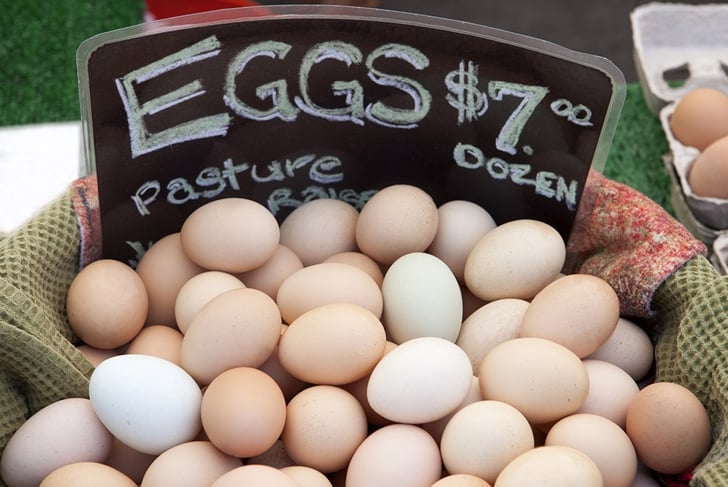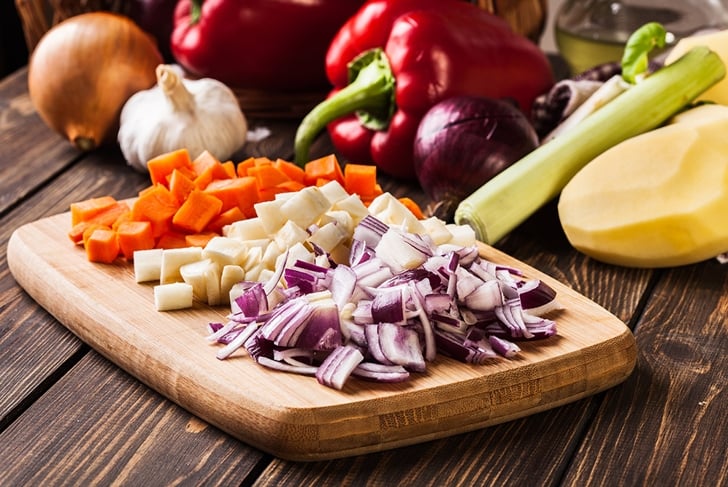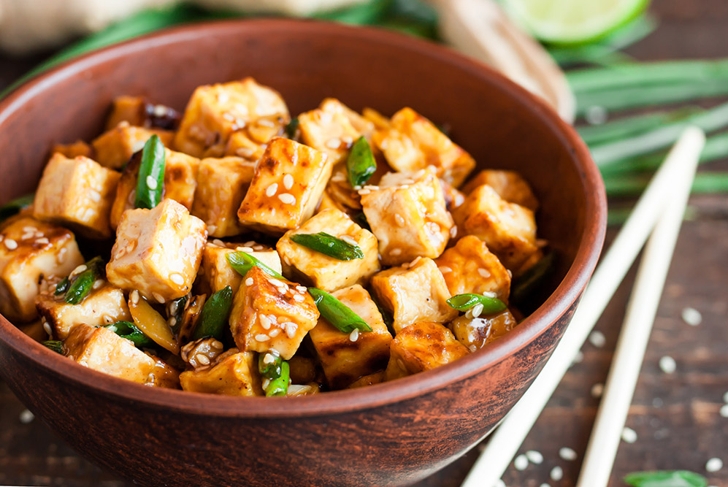
Don’t let soaring food prices stop you from eating healthy. Use these simple money-saving tips to help you keep money in your pocket and fruits, veggies, and other nutritious foods on your plate.
Feel like you’re paying more each time you go food shopping? You’re not alone. A weak loonie, geopolitical conflicts, and drought conditions are just some of the factors driving food prices up and making it super hard to save money on food. As food prices continue to climb, the Food Institute at the University of Guelph estimates this year’s rise in food costs will exceed the general inflation rate, with vegetables going up by 2 to 4 percent from 2015 and fruits by 2.5 to 4.5 percent. Don’t despair: although the price of a well-stocked fridge keeps going up, the following tips can help bring your food bill down.

Plan strategically
Registered dietitian Noelle Tourney suggests taking time to plan your meals before you shop. Try to build your meal plan around what’s on sale and what’s in season. Seasonal fruits and vegetables are not only cheaper, but they also taste better, Tourney says.
Once you have your list, stick to it. “The more prepared you are when you get to the store, the fewer impulse purchases you will make,” she says.
Get informed

Tourney says knowing the prices of the foods you normally buy will help you spot sales more easily. She suggests comparing the prices of national brands, store brands, and generic items. These items often differ little in quality, but may have a big difference in price.
Chop and dice

Although it may be tempting to grab a ready-to-go meal, Tourney says, “Remember that convenience often costs you more. Pre-cut produce and pre-made dishes are convenient, but unnecessary if you are trying to save money.”
Get to know your butcher

Meat prices rose 5 percent in 2015, and the Food Institute at the University of Guelph estimates that by the end of 2016, they could increase another 4.5 percent.
Tourney suggests befriending your butcher or local farmer. “They can help you to choose more economical alternatives, tell you about the best deals, and help you to trim and portion your meat before you take it home,” she says.
Embrace meatless meals

Another way to mitigate sky-high meat prices is to swap meat for less expensive protein sources. Tofu, lentils, and mushrooms are all highly nutritious sources of lean protein that can be used to create a meatlike texture in dishes such as chili, stir-fries, and casseroles.
Be loyal

Make use of stores’ price matching and loyalty programs. Price matching ensures great value, while remaining loyal may earn you points or other bonuses. If you’re not sure of your favourite natural health store’s price matching policy, ask.
Shop more often

Although shopping more often may seem counterintuitive to spending less, when it comes to buying fresh produce, frequent shopping trips may mean frequent savings.
To ensure fresh produce and meat sells, food stores often slash the prices of perishable items for quick sale. Take advantage of this and buy the produce and meat you plan to use right away off the reduced-priced sales racks. In addition, if you only buy what you need for the meal you’re preparing, nothing gets forgotten in the fridge.
Go to the source

Farmers’ markets, community supported agriculture (CSA) farms, and community food box programs are all great ways to get farm-fresh produce and ethically raised meat and eggs at a reasonable price.
Farmers’ markets
These are great places to meet local farmers and get a good deal on everything from freshly baked bread to unusual greens. Don’t be afraid to ask for a discount on bulk purchases.
Community supported agriculture farms
A farming model where consumers pay a set fee at the beginning of each growing season to receive a portion of the crops harvested.
Food box programs
A service (generally a community-based nonprofit) that buys produce in bulk, often directly from local farmers. Produce is portioned and distributed to members for a set fee.
Don’t let it go to waste

The average Canadian household throws away $28 worth of food each week. That adds up to more than $1,400 annually. Stop the waste by shopping in your refrigerator before making a trip to the store. Use up fresh produce and leftovers before buying anything new.
Keep produce fresh for longer
- If storing fruits and vegetables in the fridge, keep them in separate crisper drawers.
- Keep fruits that continue to ripen after being picked, such as apples, bananas, and tomatoes, away from other produce. These fruits naturally give off ethylene gas. Ethylene gas may cause surrounding produce to spoil.
- Remember, tomatoes lose flavour when refrigerated; aim to eat them within a day or two of ripening.
- Extend the life of fresh herbs such as parsley by arranging them as you would a flower bouquet: in a glass or jar of water. Keep your herb bouquet in the fridge.
- Store raw meat and seafood in sealed containers on the bottom shelf of the fridge so their juices won’t drip onto other food, rendering it unusable.
- Never refrigerate potatoes, onions, winter squash, or garlic. Keep them in a cool, dark, dry spot. Separate pungent onions and garlic from other veggies so the flavours don’t intermingle.
- Use a refrigerator thermometer to ensure optimal storage conditions. The fridge should be kept at 4 C (40 F) or lower and the freezer at -18 C (0 F) or lower.
Good to know: Best before versus expiration date

Milk, eggs, and infant formula are just some of the many food items stamped with a best before or expiration date. But what do these dates actually mean?
Best before
Tells consumers how long an unopened food product will keep its taste and nutritional value (if stored under appropriate conditions). It does not guarantee product safety.
- Required on all prepackaged foods that stay fresh for 90 days or less (if they are not packaged at the store where they are being sold).
- According to the Canadian Food Inspection Agency, unopened foods past their “best before” date may still be safe to eat, but may be lacking in flavour and nutritional value. Of course, foods that spoil quickly, such as meat and dairy, should be eaten as quickly as possible.
Expiration date
Tells consumers the last day a food product is safe to consume.
- Only a handful of products must have expiration dates in Canada, including nutritional supplements, meal replacements, and human milk substitutes such as infant formula.
- Never consume a food after its expiration date has passed.
Good to know: Produce by the numbers

Use the Environmental Working Group’s “Dirty Dozen” and “Clean Fifteen” lists to help you make informed choices about what foods are the most and least contaminated with pesticides. This ensures you get the most bang for your buck when you select organic produce.
The Dirty Dozen +
- apples
- peaches
- nectarines
- strawberries
- grapes
- celery
- spinach
- sweet bell peppers
- cucumbers
- cherry tomatoes
- snap peas (imported)
- potatoes
- hot peppers
- kale
- collard greens
The Clean Fifteen
- avocados
- sweet corn
- pineapples
- cabbage
- sweet peas (frozen)
- onions
- asparagus
- mangoes
- papayas
- kiwi
- eggplant
- grapefruit
- cantaloupe
- cauliflower
- sweet potatoes





